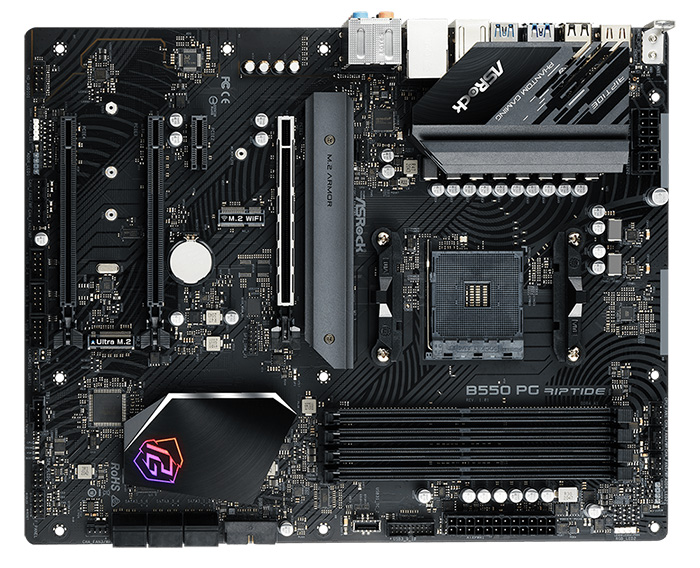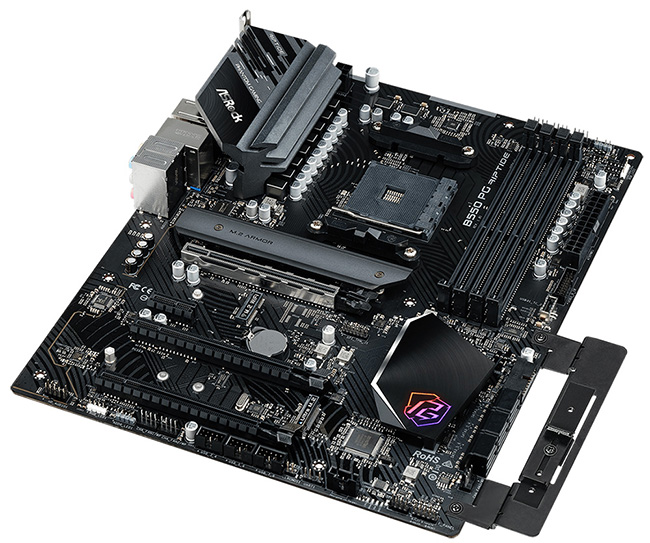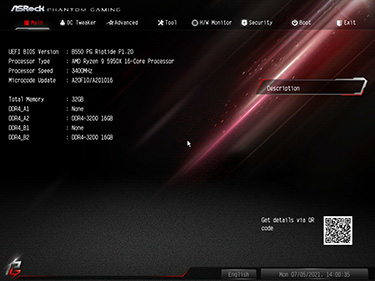Introduction
Looking to build a new rig based on AMD's AM4 processors? There's real merit in considering the B550 chipset over the dearer X570 for all but exotic builds. It offers plenty of the goodness at a lower price point, and it's perfectly reasonable to find a decent board under £150.
This is the area that ASRock wants to do well in. The most basic of boards begins at just £99. Stepping up the budget to £133 brings forth the new B550 PG Riptide, so let's take a closer look.
On first glance, for its specification the Riptide feels priced just about right, but perhaps it is still worth spending a little extra for additional useful features. MSI, for example, has the £150 B550 MPG Gaming Edge WiFi complete with integrated I/O shield, dual power-delivery heatsinks and solid WiFi to boot.
ASRock uses a 10-phase power supply (8 CPU, 2 SOC). The electrical topology is similar to what we see on other relatively budget ASRock boards insofar as UPI doublers and PWM controller are allied to Vishay 50A MOSFETs. The B550M Steel Legend is closest in terms of specification. Get past these numbers and know that the power-delivery system pushes a maximum 400A for the CPU, which is plenty enough to generate 500W - or at least 2x anything we see from even a heavily overclocked Ryzen 9 5950X.
The large heatsink covers only the CPU portion of the power supply and you can clearly see the SOC stages unadorned. That mostly makes sense as the latter duo generates little heat. Substantial in size and only getting lukewarm when the system is under load, we'd still prefer an integrated I/O section for aesthetic reasons.
ASRock is unusual in providing three sets of front-panel USB connectors. Two are traditional 19-pin offering 5Gbps speeds whilst the USB-C doubles transfers to 10Gbps. The company sees little merit in offering the faster 20Gbps on either the front or I/O section, which is a shame but understandable for cost reasons. Further uniqueness comes in the form of a bundled bracket designed to keep extra-long graphics cards secure. It's a neat idea that works well if your card weighs over 1.5kg.
RGB is only present under the chipset shroud. Illumination from seven LEDs spills out over the six SATA ports. The effect is okay looking straight on but ASRock doesn't do anything to hide the underlying LEDs. The end result is hotspots of light. Users can add their own RGB via four additional headers.
The upper heatsink-clad M.2 runs off the CPU and offers PCIe 4.0 x4 speeds whilst the lower slot hangs off the chipset and reduces bandwidth to PCIe 3.0 x4. It's difficult to understand the need for three full-length x16 slots in addition to the open-ended x1 for B550. The second and third longer slots are run off the chipset and provide a maximum PCIe 3.0 x4 and x1 speeds.
A couple of things to note here. ASRock does not provide the necessary antenna or WiFi on this model. If you do decide to upgrade at a later point - there is a specific Key-E M.2 WiFi slot present - the antenna holder is available on the left-hand side. Two USB (Type-A and Type-C) offer 10Gbps, six 5Gbps, plus a couple of USB 2.0.
Given its positioning, having HDMI out is sensible for Ryzen APUs; we'd also have preferred DisplayPort to be present. It's good to see 2.5Gb Ethernet from Killer but we'd have liked the new ALC1200 audio codec instead of last-gen ALC897.
We upgraded to the latest P1.20 BIOS prior to testing. The Instant Flash utility doesn't have the ability to download newer firmware from the web; it is programmed from a local drive.
No problems were encountered in running our preferred DDR4-3200 14-14-14-34 memory. One can toggle the RGB here or use a Windows-based utility.
Overall, before we get on to benchmarks, we feel as if ASRock choice of components is average rather than outstanding at this price point.














